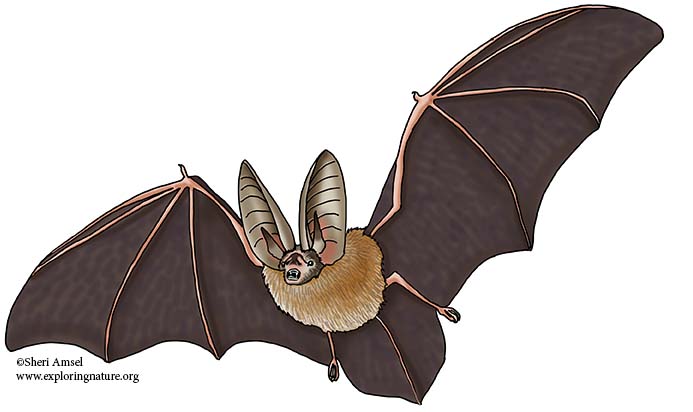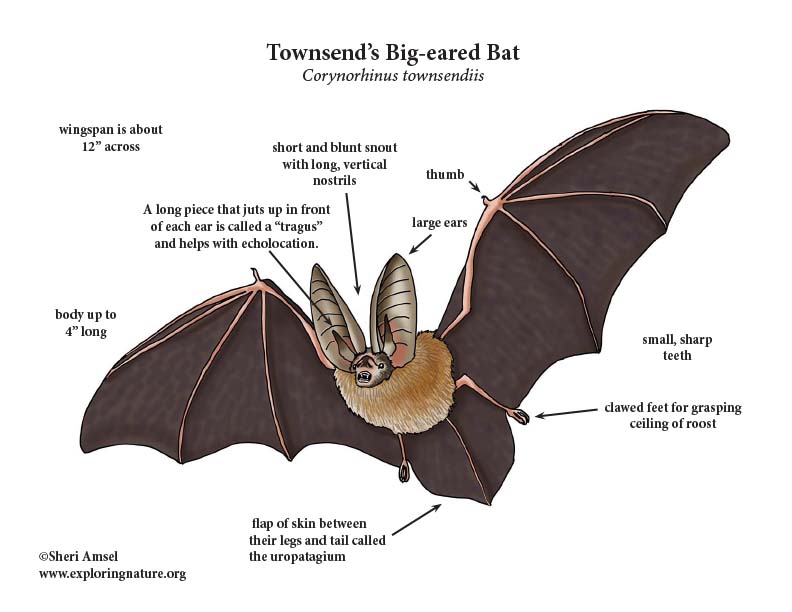

Townsend's big-eared bat is found western North American from southern Canada south through Mexico. A subspecies of this bat has been found in the southeastern U.S.
Townsend's big-eared bat lives in the drier conifer-aspen forests of the west. The eastern subspecies lives in oak-hickory forests. They roost in caves, old mines, old buildings and under cliffs. They prefer to roost in open spaces, not in small crevices.
This small brownish-gray bat weighs less than half an ounce with a wingspan than can reach a foot across. It has large, pointed ears that it rolls back across its head while sleeping. Each ear has a long piece that juts up in front, called a "tragus," that helps with echolocation. It's nose is short and blunt with long, vertical nostrils. A flap of skin stretched between their legs and tail and is called the "uropatagium."
They are nocturnal, coming out late at night to feed. They are strong flyers with an ability to hover in one place or swoop after flying insects. They hibernate through the cold seasons in groups in caves or mines. They find their way in the dark using echolocation, their large ears being a great advantage to hearing the sales sounds.
They eat mostly moths, but may also other small insects.
Owls may prey on these bats. In their roost they may be vulnerable to raccoons, snakes, rats and even housecoats, if they are roosting in abandoned buildings.
Females are pregnant from 8-14 weeks and have one "pup" in the spring. They raise their young in a nursery colony with other females all summer nursing them for about 6 weeks. Babies cling to their mothers with clawed feet. When she goes out to feed at night, the babies cling together in the roost.
If they survive to adulthood, Townsend's big-eared bats can live to 20 years in the wild.
Conservation Status: They are on the IUCN list as least concern.
Kingdom: Animalia
Phylum: Chordata
Class: Mammalia
Order: Chiroptera
Family: Vespertilionidae
Genus: Corynorhinus
Species: C. townsendii
When you research information you must cite the reference. Citing for websites is different from citing from books, magazines and periodicals. The style of citing shown here is from the MLA Style Citations (Modern Language Association).
When citing a WEBSITE the general format is as follows.
Author Last Name, First Name(s). "Title: Subtitle of Part of Web Page, if appropriate." Title: Subtitle: Section of Page if appropriate. Sponsoring/Publishing Agency, If Given. Additional significant descriptive information. Date of Electronic Publication or other Date, such as Last Updated. Day Month Year of access < URL >.
Amsel, Sheri. "Bat (Townsend’s Big-eared)" Exploring Nature Educational Resource ©2005-2024. December 13, 2024
< http://www.exploringnature.org/db/view/Townsends-Big-eared-Bat >

